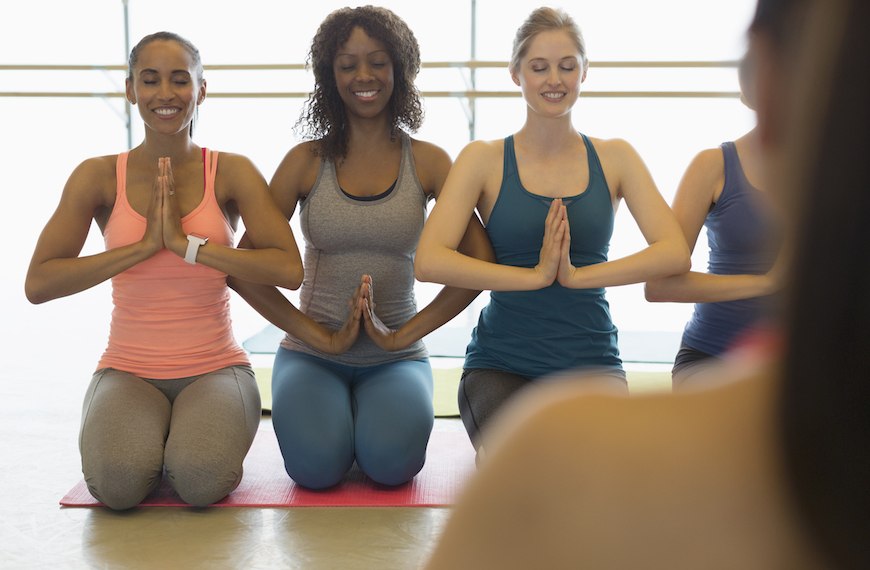Namaste. The sanskrit word is said at the end of every single yoga class, usually in conjunction with a deep bow, but what exactly does it mean? Does it translate to thank you? Great job for surviving chair pose? To find out, I called up yogi Jasmine Tarkeshi, co-founder and director of Laughing Lotus.
"When I teach a workshop or class, I'll often ask people if they know what 'namaste' means and it usually does lead to some laughter," Tarkeshi says, acknowledging that the word is said all the time in yoga classes, yet rarely understood. Originally derived from sanskrit, Tarkeshi says namaste translates to "the divine in me bows to the divine in you," or similarly, "the light in me bows to the light in you."

Why namaste is often accompanied by a bow
"Years ago, when I started my own personal yoga journey and my teachers greeted me with 'namaste' and the definition of 'the light in me bows to the light in you,' I was blown away," Tarkeshi says. "First of all, I didn't even know I had a light. So the idea that I was a reflection of the person bowing to me and their goodness was really moving."
The whole idea behind it, she explains, is reverence and egalitarianism. "It's honoring one another and the idea that we are all equal." That's why it's often coupled with a gesture, which Tarkeshi says is done by placing your hands in prayer over your heart, and bowing deeply.
What 'namaste' means in India
While here in the States, you rarely hear "namaste" outside a yoga studio, she says in India—the birthplace of both yoga and the term—it's a common greeting. "When I took my first personal pilgrimage to India and lived in an ashram, I learned that there, namaste is just an everyday greeting, sort of like, 'Hey, what's up,'" she says.

{{post.sponsorText}}
Tarkeshi explains that spirituality and Hinduism is so ingrained in their everyday life, that there isn't the same separation like there is here in the States. "I'm half-Persian and grew up in Iran where similarly, there's this beautiful sense of equality and it levels the playing field," she says. "It doesn't matter if you're a billionaire or a beggar, everyone stops five times a day to pray." She explains that the greeting of namaste is another example of their culture rooted in equality and spirituality.
Namaste beyond the yoga studio
Yoga originated in India, and Tarkeshi explains that the names for all the traditional poses are sanskrit terms. But here's the thing: If you're a yogi newbie and your teacher is telling you what to do in sanskrit, you're obviously going to have no idea what she's talking about. That's why in most classes, the teacher says the English translation for the poses, such as downward dog, happy baby, or tree pose. But the greeting of "namaste," has remained, and honors the ancient traditions of yoga.
Tarkeshi says she hopes people will take the spirit of "namaste" beyond the studio and carry it with them through everyday life. "Obviously we aren't going to go into the grocery store and greet people with 'namaste,' but greeting people as your equal and going through life treating everyone equally is a beautiful sentiment to live by," she says. To her, "namaste" is about more than acknowledging the light in people. "It's about honoring the light, darkness, past, present; someone's whole experience."
Here's why yoga is so good for you. And these are Jessica Biel's favorite yoga poses.
Loading More Posts...